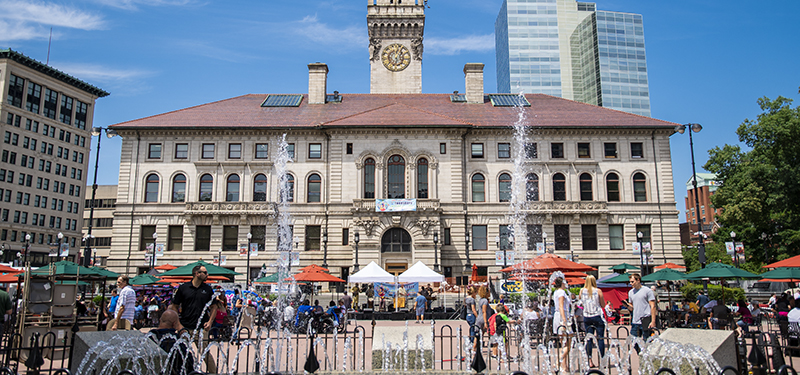

The City Manager's Office and Administration are pleased to present the City of Worcester's Fiscal Year 2025-2029 municipal Strategic Plan, which lays out an updated mission, vision, values, strategies and objectives that will guide municipal operations over the next five years.
The plan was informed by extensive self-study, internal discussion and community input dating back to the previous FY20-24 strategic plan. The community engagement process included listening sessions, focus groups, surveys and feedback solicited during the during the development of the Worcester Now | Next long-range plan and other city-wide municipal plans. The mission, vision, values and objectives aim to reflect the needs and priorities of Worcester's residents while maintaining inclusive, equitable and efficient local government.
To view the plan, you may click on each dropdown below, or read the PDF Version of the FY25 - 29 Municipal Strategic Plan.
The municipal Strategic Plan framework is focused around the identified priority areas below.
To deliver exceptional public services and municipal operations that are rooted in equity, innovation and integrity, and centered on people.
To be the best-managed city in the country and create a thriving community where opportunity is available to everyone, regardless of their background or situation in life.
Ensuring our residents can lead safe, healthy lives.
Keeping cost of living down while providing job opportunities to promote a vibrant community.
Maintaining clean streets, green spaces and blue spaces to cultivate a higher quality of life and safer, healthier neighborhoods.
Diligently working to retain all of our residents and businesses while accommodating new growth and providing essential public services.
Continuously evaluating and improving our business streams so we can deliver the highest quality service to our residents.
Investing in our children as an investment in our future.
City Manager
City Hall Room 306
455 Main Street
Worcester, MA 01608
Phone: 508-799-1175
Fax: 508-799-1208
Email Us
Office Hours:
Monday - Friday
8:30 a.m. - 5 p.m.